Thingiverse

Mars Research Station Two by xmbrst
by Thingiverse
Last crawled date: 3 years ago
Mars Research Station Two (MaRS2) is an outpost devoted to testing agricultural and building methods on Mars. While the initial Mars landing focused on just getting us there and back alive, this second mission focuses on building the knowledge required for long-term habitation on Mars.
MaRS2 is constructed out of combination of Martian materials, equipment landed in advance of the MaRS2 manned mission, and materials salvaged from the MaRS2 spacecraft.
Inflatable Carbon Fiber Habs
--
This type of habitation can be deployed immediately, but it is vulnerable to puncture and offers no radiation protection. Although radiation on Mars' surface isn't an emergency concern, the crew has gotten a large dose of radiation on the trip from Earth and so will be eager to limit further lifetime exposure. (Inflatable habs are printed in black in the photos.)
3D-Printed Regolith Structures
--
To provide better radiation and structural protection, builder-bots print walls out of regolith mixed with a small amount of binder. The honeycombed tubes printed by the builder-bots can be filled with loose regolith to improve insulation, stability and shielding properties. With crane attachments builder-bots can also lift salvaged shielding into place. (Regolith structures are printed in red in the photos.)
Salvaged Shielding
--
The in-flight hab for the trip from Earth is surrounded by radiation shielding. After the landing, the shielding is repurposed as ceilings for regolith structures and for a quonset hut hab. Inflatable habs can be tethered to their shielding covers and regolith walls to prevent the sudden collapse of a hab around its inhabitants in the event of a leak. (Salvaged shielding is printed in white in the photos.)
Martian Garden
--
MaRS2 aims to determine whether viable martian soil can be created by fostering the growth of bacteria from a small sample of earth soil. The MaRS2 garden uses regolith walls with a salvaged shielding ceiling to protect the bacteria from radiation. Reflectors channel visible sunlight into the garden, but not high-energy particles. The garden is contained within a transparent inflatable.
Salvaged Structures
--
While less spacious than the inflatable habs, the in-flight hab and the descent vehicle can both be used as ground structures. Sand bags filled with regolith can be piled on top of the in-flight hab's rigid structure to provide some radiation shielding.
The descent vehicle can be used as a lab for potentially dangerous automated chemistry and fabrication experiments. It is visited by crew members for only short periods of time, and is kept disconnected from the main hab complex. (The in-flight hab and descent vehicle are printed in white in the photos.)
Scale
--
The connector tunnels that link the inflatable habs are just big enough for a person to walk through.
MaRS2 is constructed out of combination of Martian materials, equipment landed in advance of the MaRS2 manned mission, and materials salvaged from the MaRS2 spacecraft.
Inflatable Carbon Fiber Habs
--
This type of habitation can be deployed immediately, but it is vulnerable to puncture and offers no radiation protection. Although radiation on Mars' surface isn't an emergency concern, the crew has gotten a large dose of radiation on the trip from Earth and so will be eager to limit further lifetime exposure. (Inflatable habs are printed in black in the photos.)
3D-Printed Regolith Structures
--
To provide better radiation and structural protection, builder-bots print walls out of regolith mixed with a small amount of binder. The honeycombed tubes printed by the builder-bots can be filled with loose regolith to improve insulation, stability and shielding properties. With crane attachments builder-bots can also lift salvaged shielding into place. (Regolith structures are printed in red in the photos.)
Salvaged Shielding
--
The in-flight hab for the trip from Earth is surrounded by radiation shielding. After the landing, the shielding is repurposed as ceilings for regolith structures and for a quonset hut hab. Inflatable habs can be tethered to their shielding covers and regolith walls to prevent the sudden collapse of a hab around its inhabitants in the event of a leak. (Salvaged shielding is printed in white in the photos.)
Martian Garden
--
MaRS2 aims to determine whether viable martian soil can be created by fostering the growth of bacteria from a small sample of earth soil. The MaRS2 garden uses regolith walls with a salvaged shielding ceiling to protect the bacteria from radiation. Reflectors channel visible sunlight into the garden, but not high-energy particles. The garden is contained within a transparent inflatable.
Salvaged Structures
--
While less spacious than the inflatable habs, the in-flight hab and the descent vehicle can both be used as ground structures. Sand bags filled with regolith can be piled on top of the in-flight hab's rigid structure to provide some radiation shielding.
The descent vehicle can be used as a lab for potentially dangerous automated chemistry and fabrication experiments. It is visited by crew members for only short periods of time, and is kept disconnected from the main hab complex. (The in-flight hab and descent vehicle are printed in white in the photos.)
Scale
--
The connector tunnels that link the inflatable habs are just big enough for a person to walk through.
Similar models
3dwarehouse
free

Mars Direct Habitation Module
..., and so on. after a while, a martian base will have accumulated. #mars #mars_direct #mars_direct_hab #mars_lander #robert_zubrin
3dwarehouse
free

HAB
...hab
3dwarehouse
a bacic version of the hab from the martian #hab #mars #martian #the_martian
3dwarehouse
free

Mars Direct Earth Return Vehicle
...o the life support systems on the hab. #earth_return_vehicle #erv #mars #mars_direct #mars_direct_erv #mars_lander #robert_zubrin
thingiverse
free

Customizable struts for regolith-shielded dugout houses by drxenocide
...golith.
*edit (2014jun01) added support for model making and sheet building. because if i win, makerbot will want to print one.
grabcad
free

Martian Habitat
...martian habitat
grabcad
crew habitat for living on mars. sufficient radiation shielding for multi-year surface stay.
grabcad
free

Martian Habitat V4
...martian habitat v4
grabcad
crew habitat for living on mars. sufficient radiation shielding for multi-year surface stay.
grabcad
free

Martian Habitat V3
...martian habitat v3
grabcad
crew habitat for living on mars. sufficient radiation shielding for multi-year surface stay.
grabcad
free

Martian Habitat V2
...martian habitat v2
grabcad
crew habitat for living on mars. sufficient radiation shielding for multi-year surface stay.
thingiverse
free

Mars Settlement printed on site by Visualator
...y printing a variety of structures, we can vary the use of the final settlement and optimize the spaces for their final purposes.
3dwarehouse
free

Mission to Mars? Part 13 (EDL)
...bit we can come back to pick them up later for the return trip, for now we are beginning our descent into the martian atmosphere.
Xmbrst
thingiverse
free

Lego Handheld Gem by xmbrst
...lego handheld gem by xmbrst
thingiverse
a gem that can be held by a lego mini-figure.
thingiverse
free

Hieroglyphic Lego by xmbrst
...thingiverse.com/thing:1169782 and used openscad to put them on a lego pillar made with http://www.thingiverse.com/thing:1621890 .
thingiverse
free

Lego Mad Scientist Lab Pieces by xmbrst
...lego mad scientist lab pieces by xmbrst
thingiverse
lego pieces for building a mad scientist lab.
thingiverse
free

Penrose Lattice Basket by xmbrst
...asket made from penrose tiling lattices assembled into a box shape. stackable. (only the top basket in a stack can open forward.)
thingiverse
free

Wooden Train Tunnel by xmbrst
...s/ilabbb0hkrl . a tunnel for brio-compatible trains, with rounded corners. tall enough for munipals subway trains to fit through.
thingiverse
free

Toy Subway Map Stand by xmbrst
...rst
thingiverse
a miniature subway map stand, like the kind you see on a subway platform. for use with toy wooden subway trains.
thingiverse
free

Bump Blocks: Counting and Addition Manipulatives by xmbrst
... by xmbrst
thingiverse
learn counting and numbers by counting the bumps on individual blocks. learn addition by stacking blocks.
thingiverse
free

No-support Duplo by xmbrst
...es and buttresses to domonoky's original to eliminate the need for support.
i also added an option to remove the top nibbles.
thingiverse
free

Gyroid Soma Cube Puzzle by xmbrst
...on. when assembled into a cube correctly, the cube forms a single continuous gyroid section.
based on emmett's dual gyroid.
thingiverse
free

Display Stand for Prints or Figurines by xmbrst
... to make multi-level displays.
the grooves on the top (i.e., on the underside of the stl) make it easier to remove from a raft.
Research
3d_export
$5

research table
...research table
3dexport
turbosquid
$400

Research Facility.max
... available on turbo squid, the world's leading provider of digital 3d models for visualization, films, television, and games.
turbosquid
$35

Research Center
... available on turbo squid, the world's leading provider of digital 3d models for visualization, films, television, and games.
turbosquid
$30

PATHFINDER RESEARCHER
... available on turbo squid, the world's leading provider of digital 3d models for visualization, films, television, and games.
3d_export
$75

research vessel
...research vessel
3dexport
obj. 3ds. fbx. max12. one texture.
turbosquid
$39

Space Research Ship
...d model space research ship for download as 3ds, max, and fbx on turbosquid: 3d models for games, architecture, videos. (1510819)
turbosquid
$30

VIGILENT SEEKER RESEARCHER
... available on turbo squid, the world's leading provider of digital 3d models for visualization, films, television, and games.
3d_export
$65

antarctic research ship
...antarctic research ship
3dexport
simple rendering of the scene file
3d_export
$40

Scientific research satellite 3D Model
...rch satellite earth space nasa communications sat orbit esa satelite
scientific research satellite 3d model tartino 2740 3dexport
turbosquid
$159

Scientific Research Ship 2
... model scientific research ship 2 for download as max and fbx on turbosquid: 3d models for games, architecture, videos. (1594336)
Mars
3d_ocean
$10

Mars
...tar stars system universal way world
this is the mars with atmosphere. the textures file including 4 maps. thank you for looking.
turbosquid
$2

MARS
...
turbosquid
royalty free 3d model mars for download as blend on turbosquid: 3d models for games, architecture, videos. (1170651)
3ddd
free

ClassiCon Mars
...classicon mars
3ddd
classicon , mars
стул mars от classicon.
3ds max 2011 + fbx. vray.
turbosquid
$12
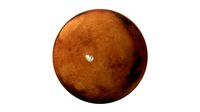
Mars
...id
royalty free 3d model mars for download as blend and gltf on turbosquid: 3d models for games, architecture, videos. (1659040)
turbosquid
$1

the mars
...oyalty free 3d model the mars for download as blend and blend on turbosquid: 3d models for games, architecture, videos. (1704346)
turbosquid
free

mars
...squid
royalty free 3d model mars for download as max and obj on turbosquid: 3d models for games, architecture, videos. (1355198)
turbosquid
$59

Mars
...
royalty free 3d model mars for download as max, obj, and fbx on turbosquid: 3d models for games, architecture, videos. (1259238)
turbosquid
$12

Mars
...lty free 3d model mars for download as 3ds, max, obj, and fbx on turbosquid: 3d models for games, architecture, videos. (1152228)
turbosquid
$5

Mars
...y free 3d model mars for download as obj, fbx, blend, and dae on turbosquid: 3d models for games, architecture, videos. (1292956)
3d_export
free

mars landscape
...mars landscape
3dexport
mars landscape made with word machine.
Station
3d_export
$5

station
...station
3dexport
station
archibase_planet
free
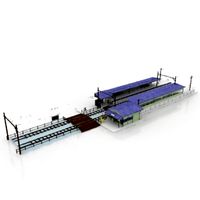
Station
...station
archibase planet
railroad station railway station bay
railway station n160707 - 3d model for interior 3d visualization.
archibase_planet
free
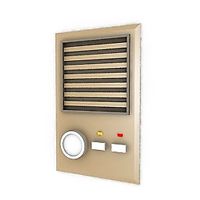
Station
...station
archibase planet
intercom station equipment
intercom station - 3d model for interior 3d visualization.
archibase_planet
free
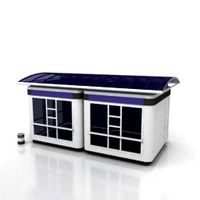
Station
...station
archibase planet
station
station n260108 - 3d model (*.gsm+*.3ds) for interior 3d visualization.
3d_export
$5

Station
...station
3dexport
low poly bus station
archibase_planet
free

Station
...station
archibase planet
building station construction
station n170708 - 3d model(*.gsm+*.3ds) for interior 3d visualization.
archibase_planet
free
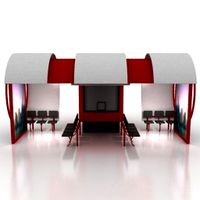
Station
...station
archibase planet
bus station bus stop
station 1 - 3d model (*.gsm+*.3ds) for interior 3d visualization.
archibase_planet
free

Station
...station
archibase planet
bus station bus stop
station 2 - 3d model (*.gsm+*.3ds) for interior 3d visualization.
archibase_planet
free
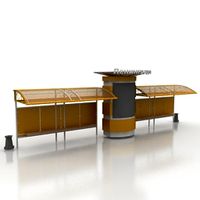
Station
...station
archibase planet
bus station bus stop
station 3 - 3d model (*.gsm+*.3ds) for interior 3d visualization.
3d_ocean
$19
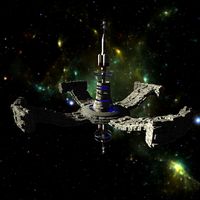
Space station
...space station
3docean
space station
space station
Two
turbosquid
$4

Two Axes Two States
...free 3d model two axes two states for download as obj and fbx on turbosquid: 3d models for games, architecture, videos. (1468396)
3d_export
$5
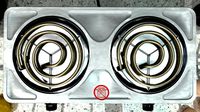
s of two one and two
...blender file. one burner cooker: vertices: 16,221 faces: 14,780 triangle: 31,490 two burner stove: vertices: 25,200 faces: 23,625
turbosquid
$20
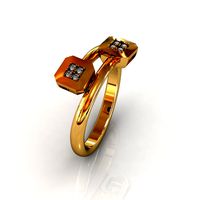
two
...osquid
royalty free 3d model two for download as 3ds and stl on turbosquid: 3d models for games, architecture, videos. (1435051)
3ddd
$1
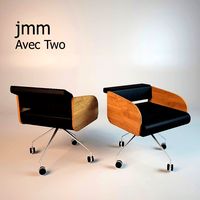
avec two
...avec two
3ddd
jmm , avec two
jmm avec two
3ddd
$1

cea two
... вентилятор , потолочный
cea two
все размеры
vray+corona
3d_export
$5
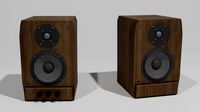
Two speaker
...two speaker
3dexport
this is a 3d model of two speakers from sven
3d_export
free
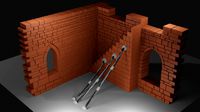
Two wall
...two wall
3dexport
two wall<br>.blend
design_connected
$29
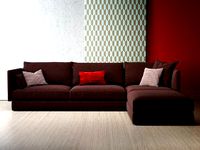
All-Two
...all-two
designconnected
bonaldo all-two computer generated 3d model. designed by bicego, sergio.
design_connected
$9

Two Timer
...two timer
designconnected
established & sons two timer computer generated 3d model. designed by industrial facility.
turbosquid
$21
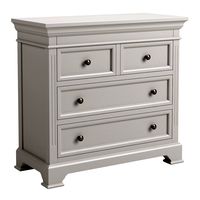
DAVENTRY Two Over Two Chest of Drawers
... chest of drawers for download as max, max, max, fbx, and obj on turbosquid: 3d models for games, architecture, videos. (1684477)
